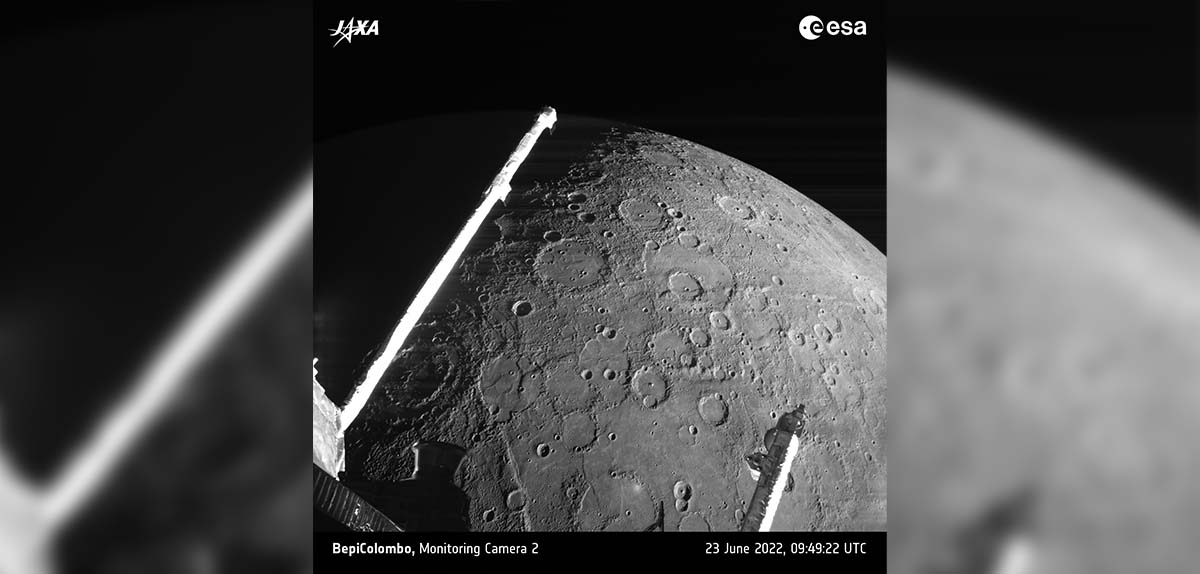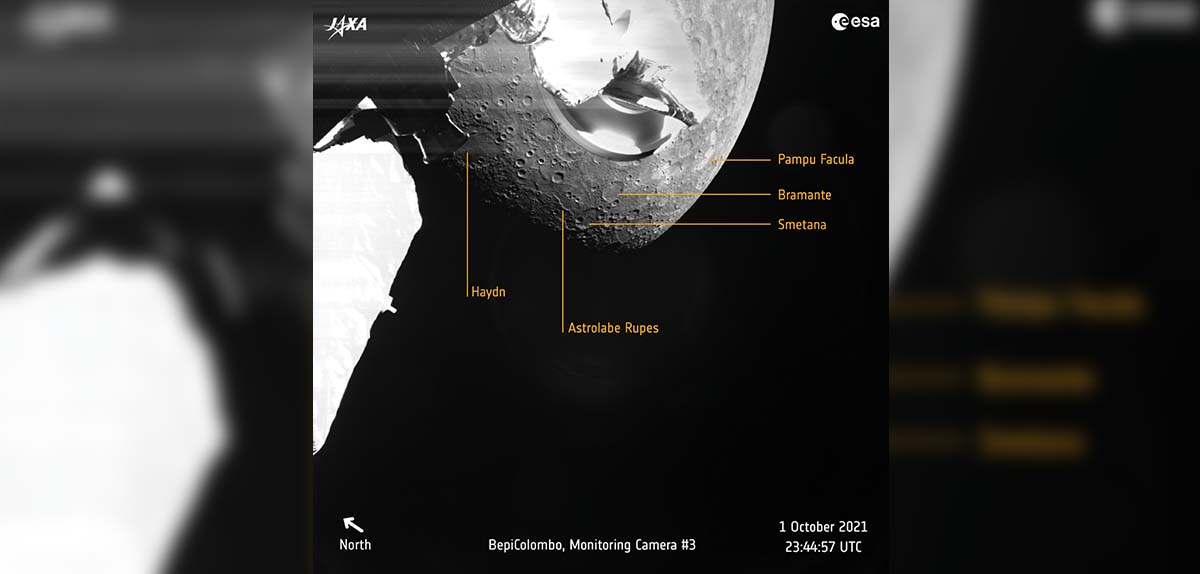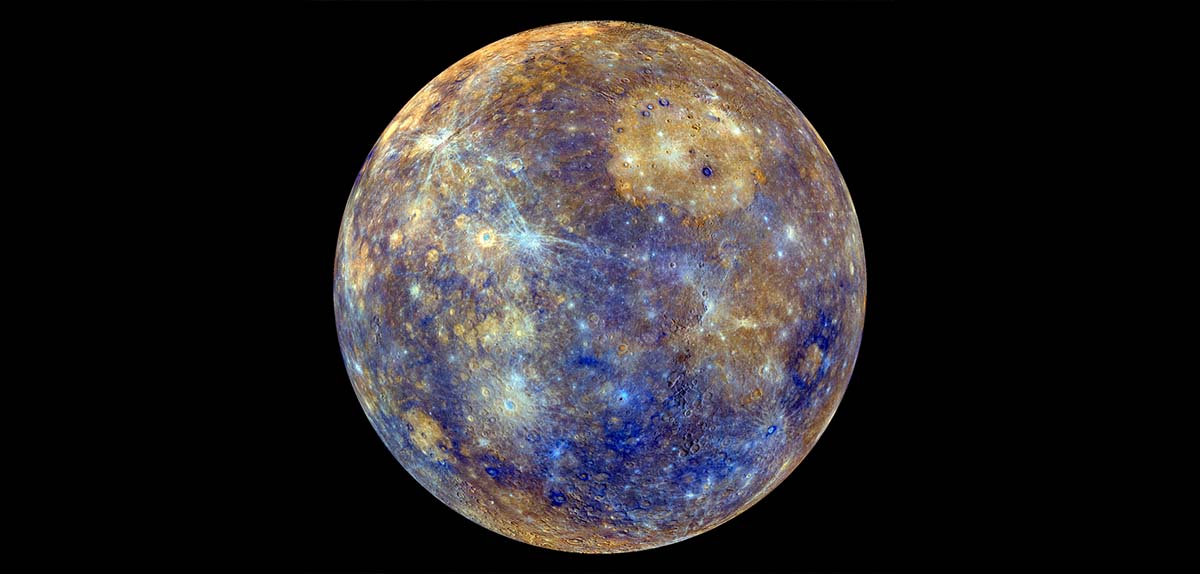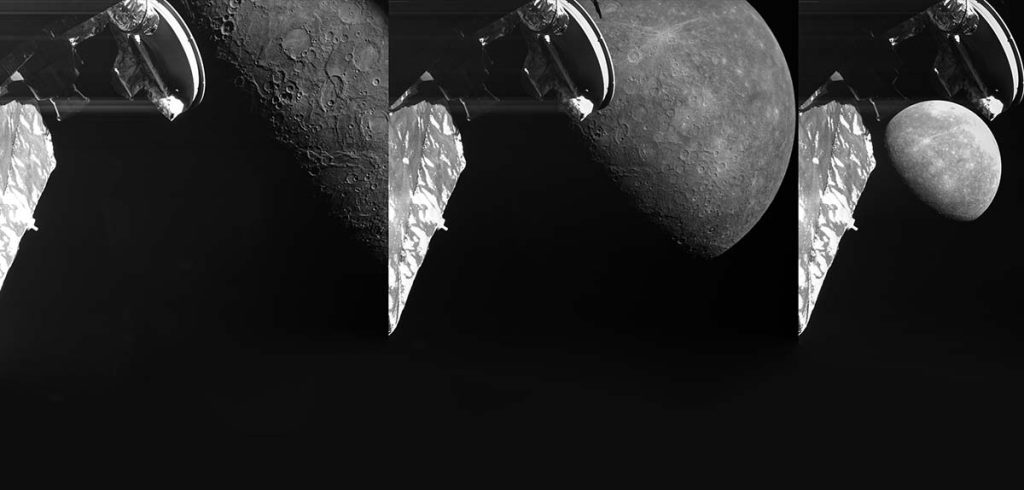Only a few weeks later, at the other end of our solar system, the BepiColombo spacecraft performed its third flyby on Mercury.
The previous two
manoeuvres took place in October 2021 and June 2022 respectively,
still three more to go over the next two years before it reaches its
final destination in orbit of Mercury on 5 December 2025. During
these flyby apporoximations the spacecraft’s on-board cameras
send back images of geological details of the planet’s surface.
Of the four inner planets of the solar system, Mercury is the one
least explored. BepiColombo will be the second mission to orbit this
planet and we expect to get answers to questions such as whether
there is ice in the craters at its poles or whether it has a magnetic
field. The made-in-Spain technology present in this mission provides
key elements for the achievement of its scientific objectives.
About the image
The images were captured by the onboard monitoring cameras on 19th June showing geological
features on the planet’s surface.
BepiColombo surveys Mercury’s rich geology

About the image
Imagen de Mercurio tomada por la cámara de monitorización 2
del Módulo de Transferencia el 23 de junio de 2022 a 920 km de altura sobre la superficie. (2º flyby).
A taste of Mercury geology

About the image
View of Mercury’s surface taken by the Mercury Transfer Module’s Monitoring
Camera 3 the 1 October 2021 when the spacecraft was within about 2687 km from
the surface. (1st flyby)
Colors of the Innermost Planet

About the image
This colourful view of Mercury was produced by using images from the MESSENGER's mission. These colours are not what Mercury would look like to the human eye, but rather the colours enhance the chemical, mineralogical, and physical differences from the rocks on the planet’s surface.





